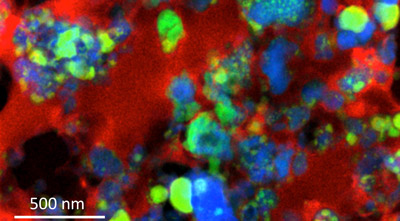
Experiments conducted at the Foundry helped to confirm that samples of interplanetary particles – collected from Earth’s upper atmosphere and believed to originate from comets – contain dust leftover from the initial formation of the solar system.
An international team, led by Hope Ishii, a Foundry user from the University of Hawaii at Manoa (UH Manoa), studied the particles’ chemical composition using infrared light at the Advanced Light Source (ALS) and explored their nanoscale chemical makeup using electron microscopes at the Molecular Foundry.
The initial solids from which the solar system formed consisted almost entirely of carbon, ices, and disordered (amorphous) silicate, the team concluded. This dust was mostly destroyed and reworked by processes that led to the formation of planets. Surviving samples of pre-solar dust are most likely to be preserved in comets – small, cold bodies that formed in the outer solar nebula.
In a relatively obscure class of these interplanetary dust particles believed to originate from comets, there are tiny glassy grains called GEMS (glass embedded with metal and sulfides) that are typically only tens to hundreds of nanometers in diameter, or less than a hundredth of the thickness of a human hair. Researchers embedded the sample grains in an epoxy that was cut into thin slices for the various experiments.
Using transmission electron microscopy at the Molecular Foundry, the research team made maps of the element distributions and discovered that these glassy grains are made up of subgrains that aggregated together in a different environment prior to the formation of the comet.
The nanoscale GEMS subgrains are bound together by dense organic carbon in clusters comprising the GEMS grains. These GEMS grains were later glued together with other components of the cometary dust by a distinct, lower-density organic carbon matrix.
The types of carbon that rim the subgrains and that form the matrix in these particles decompose with even weak heating, suggesting that the GEMS could not have formed in the hot inner solar nebula, and instead formed in a cold, radiation-rich environment, such as the outer solar nebula or pre-solar molecular cloud.

